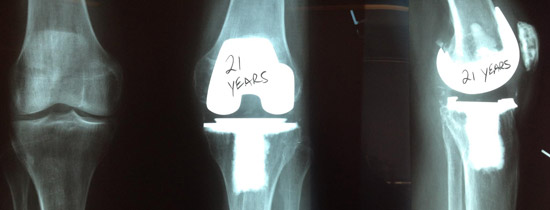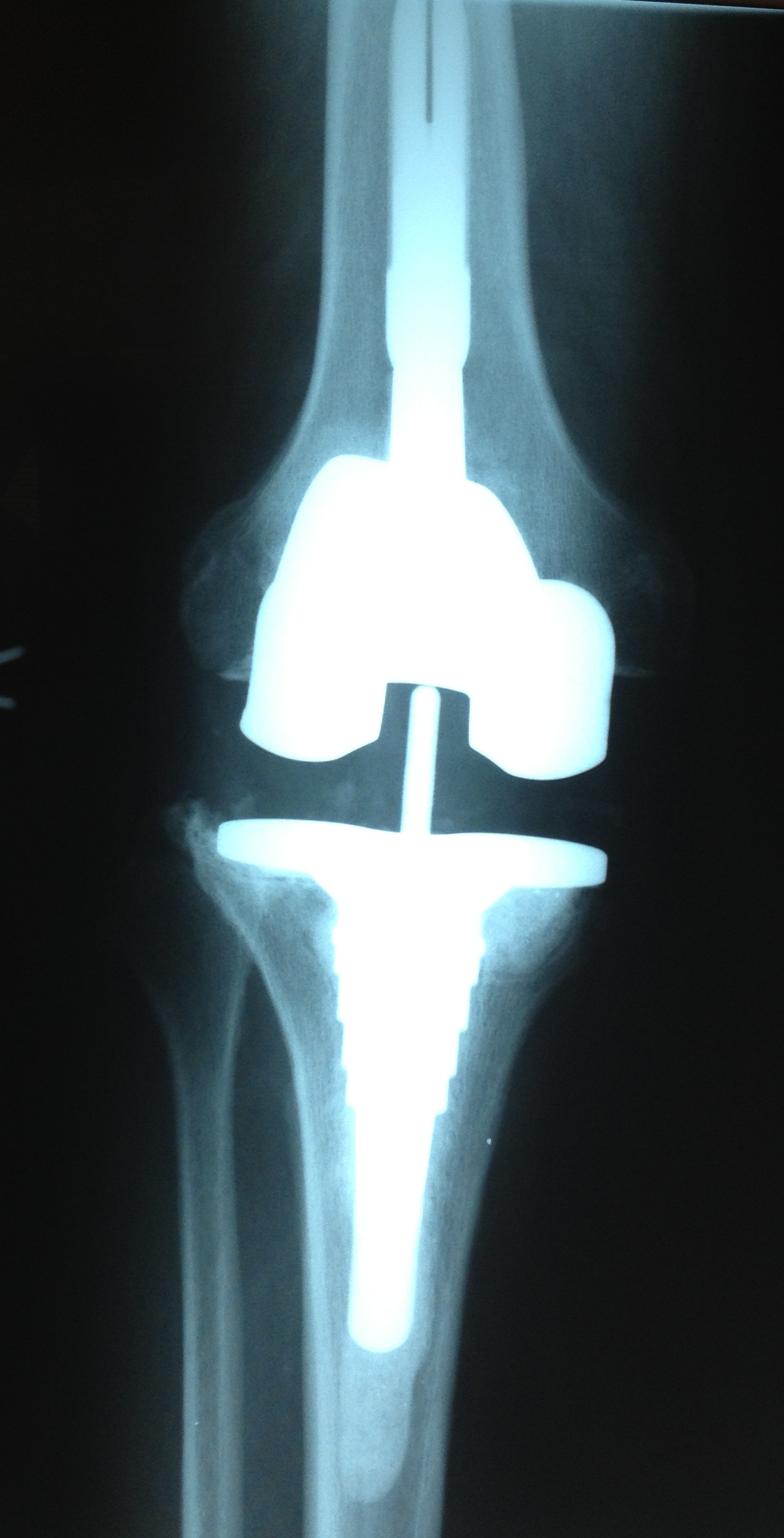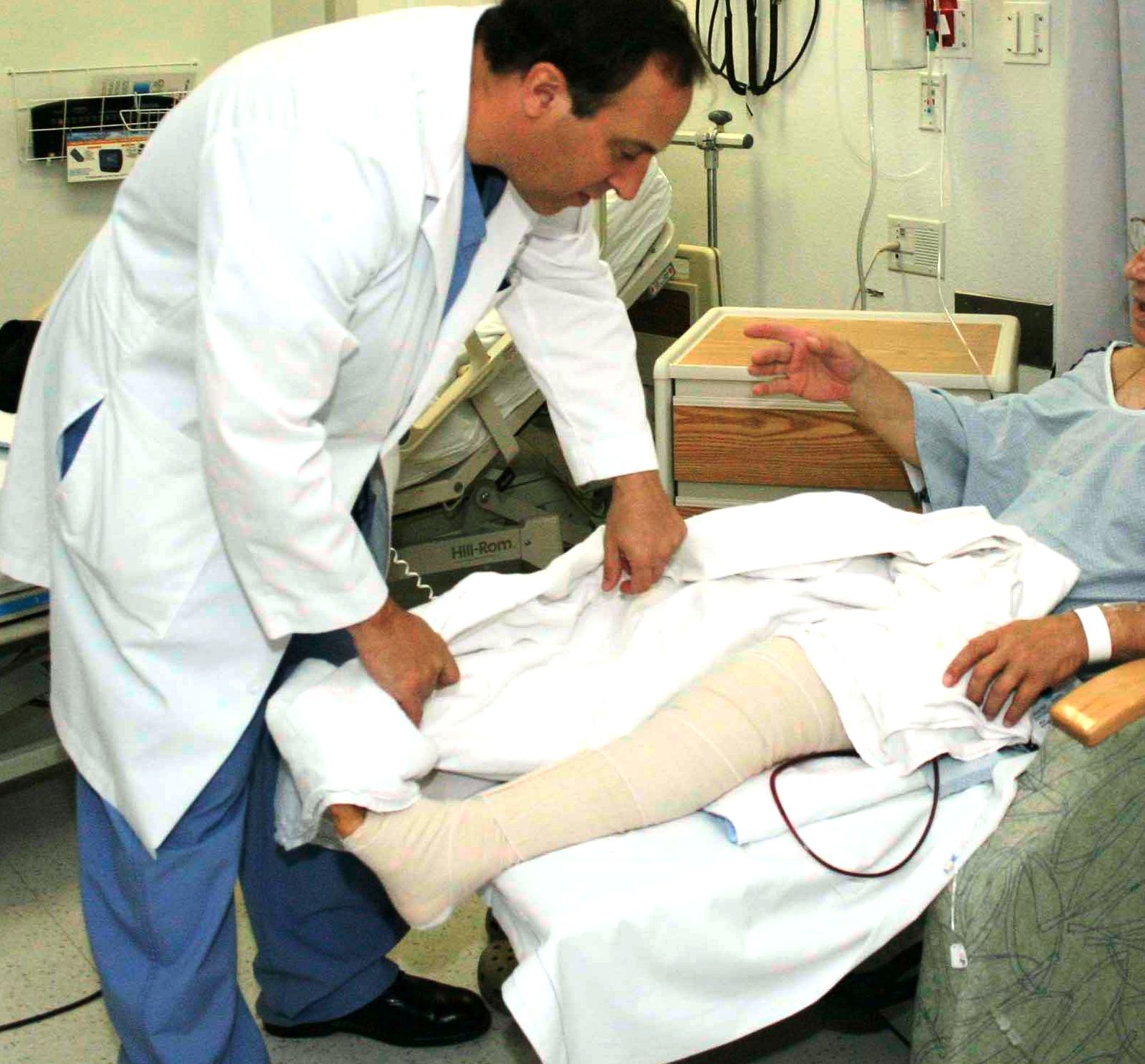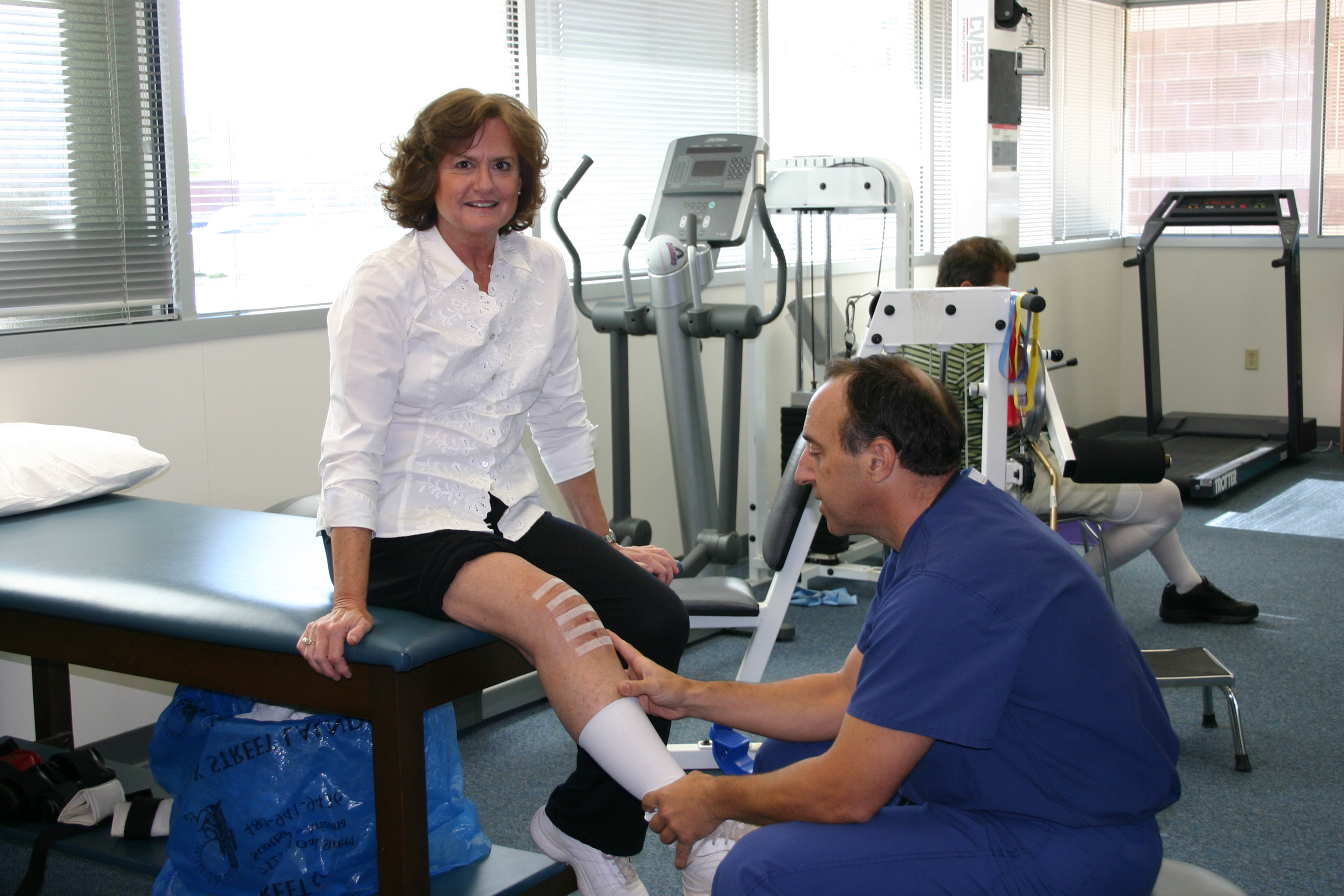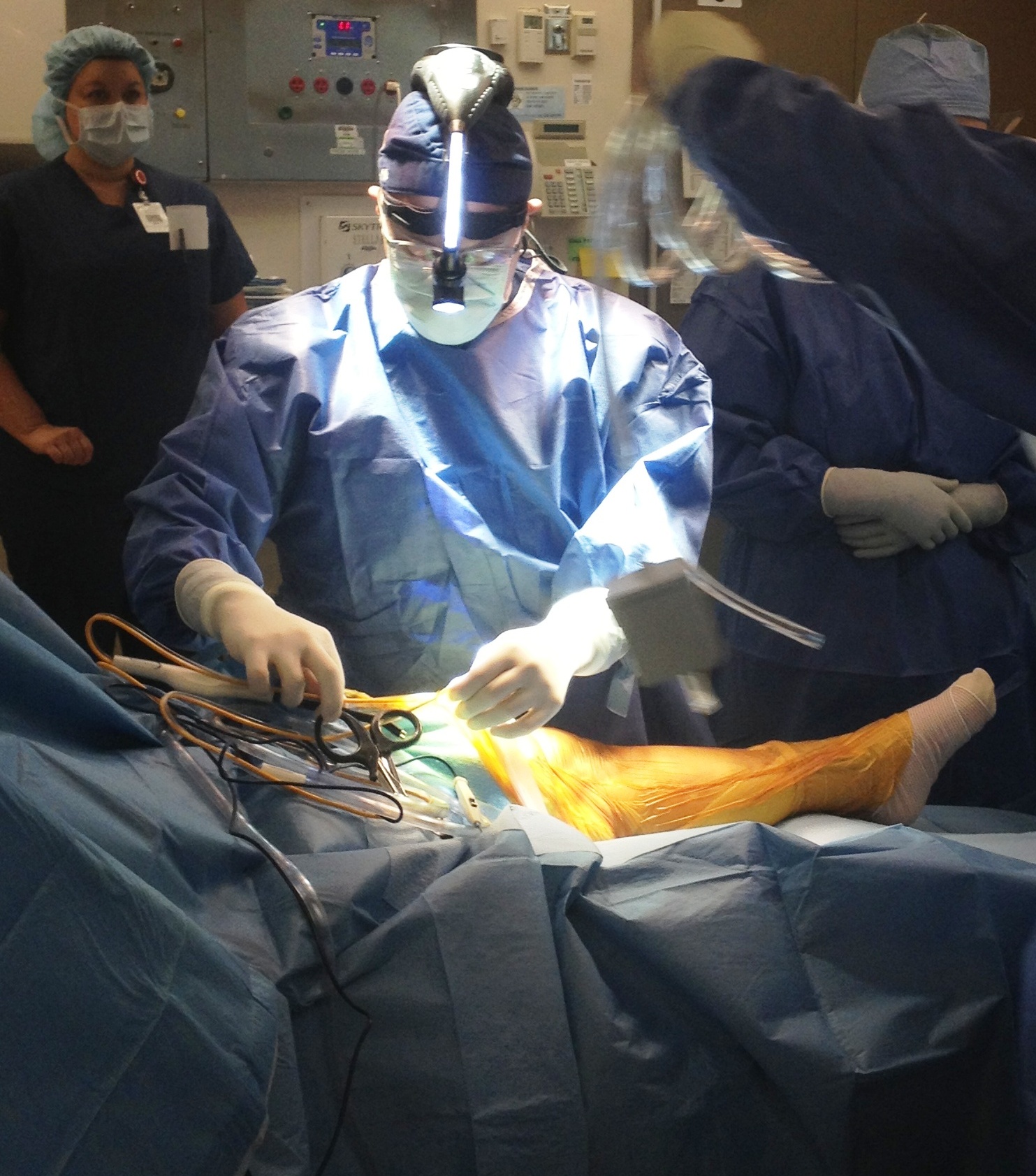Revision Total Knee Replacement: Frequently asked questions!
If my total knee ever fails, can it be done over?:
YES! A highly trained specialist orthopedic surgeon like Dr. Kozinn, who has completed a Total Joint Fellowship or has other advanced experience can re-do your total knee joint. It is a more complicated procedure than primary arthroplasty. The surgeries are longer, and mechanical solutions often customized and more unique. The results are generally very good, although not quite as good as primary total joint replacement. We use a “stronger” implant that often has modular stems to give better support in the softer bone.
Why is revision joint replacement more complicated?
After years of implant use, the remaining bone quality can be compromised, and special techniques are required to “rebuild” the bone supporting the new implants. Sometimes we use bone from cadavers (bone graft) or metal augments to rebuild the bone. The bone is softer, and more prone to fractures. Incisions are larger (not possible to do through a mini incision), and blood loss is greater.
How hard is it to get the old joint out?
If the old joint is loose, it is quite easy to remove. If the joint fails for another reason, it can be very difficult to get out. The hardest implant to remove is an old fully cemented stemmed implant that is buried deep into the shaft of the bone. Sometimes this requires the surgeon to split the bone and then repair it with cables. We can crack the old cement with chisels and loosen the implant bond.
Is the recovery longer than usual?
Sometimes it is. Often crutches are needed to take weight off of the healing bone (particularly if the bone has been split). Sometimes the recovery is similar to a primary joint replacement, particularly if the re-do surgery involved only a plastic liner exchange. The possible complications are similar to primary joint replacement,and the infection rate is higher. This is mostly because more soft tissues are stripped from the bone during implant removal, and there is more bleeding. In revision knee surgery, often the knee ligaments need to be lengthened on the contracted side, or shortened on the loose side. Special implants can substitute for the ligaments when they are missing or damaged.
Can the joint be revised more than once?
Yes, and it is possible for very young patients to have two or three replacement operations in their lifetime. Special implants are available that fit unique situations. Besides loosening from the bone, other possible reasons for revision include infection, implant breakage, osteolysis (bone loss from particle debris), and instability. Instability occurs when there has been a gradual stretching out of a ligament, leading to a sliding motion, pain and swelling. Sometimes this can be fixed by implanting a thicker plastic spacer. Other times, replacement with a new implant is required.
Why would a knee replacement loosen from the bone?
Most don’t ! … however some knees will separate from the bone over time, particularly if over used in sports or heavy work. . This is because bone is alive and adapts either positively or negatively to the “foreign” metal implant in some people. The bone can actually resorb away from the cement and lead to loosening and pain. This can be fixed with a new implant, often using longer stems to get better cement fixation.
How long will I be in the hospital after revision surgery?
Most revision patients stay one extra day in the hospital..usually three days total. This allows for more therapy and wound care before discharge. Some patients will have to protect the repair by walking with a walker or crutches partial weight bearing. Antibiotics are given to prevent infection, and blood thinnners are given to protect against clots in the veins.
When I be able to get off crutches and resume normal activities?
Revision surgeries may have different healing periods. Most patients will be healed by 3 months after surgery and crutches can be discontinued at 2 weeks. A period of physical therapy is usual for about a month after surgery.Most sutures come out at two weeks after surgery. You can shower after surgery, but you should not soak the wound in a tub or pool for 2 weeks to avoid possible infection.
Why would my joint become infected?
Infection is rare but possible. About 1% of knees will become infected, often just a case of bad luck. An early infection can often be cured by washing the joint out in the operating room and giving 6 weeks off IV antibiotics. Chronic infections, usually presenting much later may require full removal of the joint and replacement with a new one in 1 or 2 stages.
What are the Results of Revision TKR?
Actually the results are quite good. Probably up to 97% early success excluding infected joints. They are more difficult to cure, but ultimately over 90 percent of infected total joints will be healed and working well. There remain the usual medical risks of primary TKR, like 1% DVT/PE, anesthesia issues like confusion or pneumonia. We use spinal anesthesia whenever possible because it is safer. There is a 2% loss of motion from recurrent scar tissue, 2% unexplained mod pain or swelling. Expectations for perfection can sometimes be hard to meet.
Where can I get more information about Revision Surgery?
The internet has many articles. Search Google, or better yet, make an appointment with us to go over your situation in person. Our websites have links to useful information as well, www.ScottsdaleJointCenter.com and www.totalknee.org
Please also see our facebook page ; www.facebook.com/totalkneereplacement
Stuart Kozinn MD
480 994 1149
www.ScottsdaleJointcenter.com
www.SHC.org




